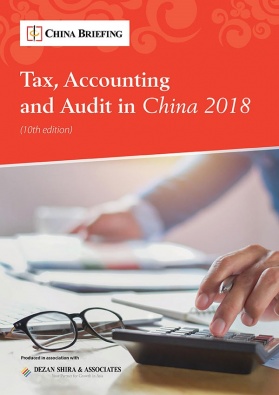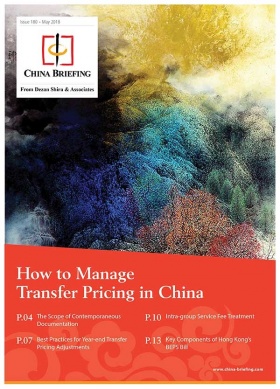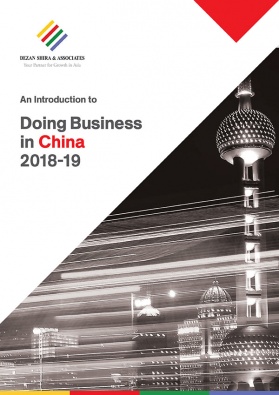Chinese Accounting Standards: A Primer for Foreign Investors
Foreign companies establishing a presence in China will encounter a host of considerations that do not exist in their home country. Of these, interpreting and understanding China’s system of accounting standards can be an especially difficult challenge.
China only embraced a market-driven economy recently, so its accounting and bookkeeping systems are comparatively less mature than those found in developed economies. Until the mid-2000’s, China’s accounting standards were still based on a socialist economic model.
While China is making good progress in converging its accounting standards with international standards, understanding the financial statements prepared by China-based entities under Chinese accounting standards is still complicated.
Framework for Chinese Accounting Standards
According to the Company Law and other relevant regulations, it is compulsory for all types of foreign-invested enterprises (FIEs) in China to comply with annual statutory auditing and other compliance processes.
Completing annual statutory audits and settling relevant tax liabilities are prerequisites for FIEs to distribute and repatriate their profits or dividends back to their home country. Failure to do so may result in extra expenses, penalties or even the revoking of business licences.
Accounting and bookkeeping in China are governed by the Chinese Accounting Standards (CAS), also known as the Chinese Generally Accepted Accounting Principles. The CAS framework is based on two standards:
- Accounting Standards for Business Enterprises (ASBEs); and
- Accounting Standards for Small Business Enterprises (ASSBEs).
Multinational corporate groups normally try and reconcile the CAS, the International Financial Reporting Standards (IFRS) or the United States’ Generally Accepted Accounting Principles when consolidating financial statements at the group level.
The current ASBEs were released in 2006 and came into force in January 2007. According to the IFRS Foundation, the 2006 the ASBEs “substantially converged with the IFRS”. After releasing a series of amendments in 2012, the merging of the ASBEs with the IFRS was achieved.
The ASSBEs entered into force on January 1, 2013, and provided unified standards for small-scale enterprises to enhance their internal controls to prevent tax and accounting fraud. The ASSBEs use the ASBEs as a point of reference but are similar to other tax laws, which simplifies the process of making any adjustments when following both accounting standards and tax rules. Small-scale enterprises can choose to adopt either the ASBEs or the ASSBEs.
Differences between Chinese and international standards
Although the CAS and the IFRS are generally considered to be quite similar to each other, they also slightly differ in some respects:
- Valuation methods for fixed assets – Under the IFRS, one may choose the valuation method for certain types of fixed assets. The company can value these assets either by using the historical-cost method, or by re-evaluating their assets. The CAS, however, only allows for fixed assets to be valued according to their historical cost.
- Detailed rules in the CAS – For certain items that are common in China, the CAS’s rules are more detailed than the IFRS. An example would be the merging of two companies controlled by the same entity and having similar interests. CAS require that the comparative figures be restated, whereas there is no specific rule for this in IFRS.
- Detailed rules in the IFRS – Conversely, the IFRS has rules for situations that are uncommon in China, such as for employee benefit plans. Apart from paying employees with company stock, the CAS does not address certain types of employee benefits that are offered by multinationals. Difficulties can arise when the parent company attempts to use the same benefits package with its Chinese subsidiary. In this case, the company may need to consult with the Ministry of Finance (MOF) as to how such transactions should be recorded.
- Delayed implementation of the IFRS – When new updates to the IFRS are released, the MOF reviews them to determine if they are appropriate for China, and whether they will be incorporated into the CAS. As a result, the adoption of new IFRS standards is often delayed, or does not happen at all. This can lead to further complications if there are countries where corporations establish separate entities and adopt the new IFRS rules instead.
Navigating Chinese Accounting Standards
The problem with having different accounting standards becomes much more apparent when an overseas parent company requests financial information from its Chinese subsidiary. Since companies are required by law to follow these different standards, information from the Chinese subsidiary needs to be translated in order to be added to the overseas parent’s company books in a procedure known as ‘mapping’.
Larger multinationals tend to have specialized software for assisting the corporate group with this process, but as this software tends to be very expensive, small and medium-sized enterprises often need to do conversions manually. There are two major points a company needs to be aware of when mapping its books.
The first are the differences between Chinese and international accounting standards, as discussed previously. Whether performed in-house or outsourced to a trusted adviser, the company’s accountant will need to take a detailed look at the differences between CAS and the target accounting system, as well as explore whether any of the firm’s activities are affected, often spending several days in the process.
When outsourcing accounting work, it is important to notify accounting of any need to translate the company’s accounts as soon as possible. If accounting only learns of the request later on, this may significantly delay the process.
It is also important to note the differences in accounting entry codes. Conversion is a one-time procedure the outsourced accountant needs to complete when they are first contracted by a new company. Once the accountant determines which Chinese entry matches the foreign entry, these figures can be automatically converted.
As the CAS becomes increasingly similar to international standards, foreign investors must adapt to the changing environment. Although changes to accounting and bookkeeping rules can create challenges in the immediate term, in the long term, reforms should make the CAS reflect international best practices.
(This article was originally published in January 2018 and has been updated to include the latest developments.)
About Us
China Briefing is produced by Dezan Shira & Associates. The firm assists foreign investors throughout Asia and maintains offices in China, Hong Kong, Indonesia, Singapore, Russia, and Vietnam. Please contact info@dezshira.com or visit our website at www.dezshira.com.
- Previous Article New China Tariff Cuts to Lower Costs for Manufacturers, Consumers
- Next Article China’s FDI Policy: Wider Market Access, Regional Incentives Announced








